Back from Chiang Dao & Chiang Mai

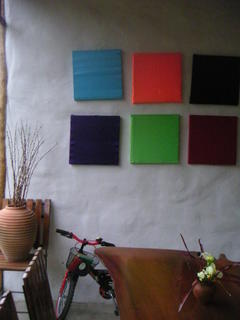

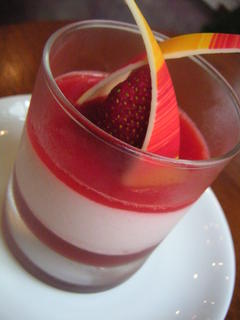


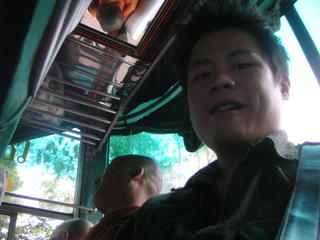
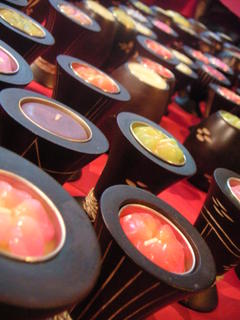
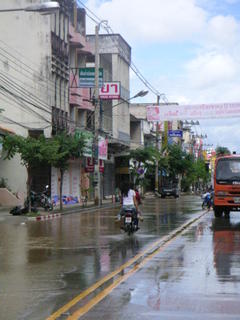

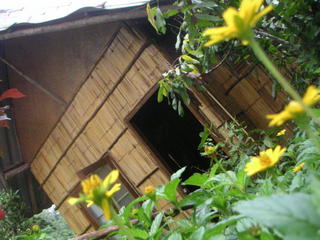



 More Images from Chiang Mai/Chiang Dao
More Images from Chiang Mai/Chiang DaoChiang Dao
Did I mention I hitched a ride for the very first time?
On the road between Chiang Dao and Tha Ton/Fang, we alighted from our bus abruptly. We had long overshot our destination, Chiang Dao, by a good 40 minutes. We had planned to stay for a night at the tranquil Chiang Dao Nest, which is just under 1.5 hours from Chiang Mai. So, desperate to get to the hill station before it turned dark, we had our hands out-stretched, and before I knew it, I had successfully done it. The Thai gentleman was very friendly and sent us right up into the hills. We didn’t even have a chance to thank him.
As it drizzled incessantly, we stepped out of our huts into the café area to have a long dinner. I had a main course of pan-roasted duck breast piqued with honey lime and spices while my friend settled for slow-cooked tenderloin tempered with by garlic and lime. We ended dinner with a passion fruit cheese cake with very little conversation in between. I suppose it was therapeutic listening to the sky raining down into the heart of the forest. With clouds so near we could grab them, it was cooler than usual and convinced me for a wee moment that no amount of good deed would put me closer to heaven than a stay at a hill resort. We retreated to our simple hut of a room, which was cosy and comfortable and had no telly. We both read—I spent an evening pouring over a book on the ethnic minority tribes in the Golden Triangle and so wished I could see them up close.
Next morning, I woke up to a beautiful garden in a secluded forest. I made like Somerset Maugham at my balcony, taking in the quietude. I ate a breakfast of toasts and scrambled eggs, went back to sleep some more before leaving Chiang Dao for Chiang Mai. The rain of the night before—thanks to Vincente—had left many riverside communities submerged in water. The hotel staff had warned me the night before that if the rain got any heavier, I would have to take a boat over the submerged roads to get to my Chiang Mai-bound bus at a dry point. Thankfully, there wasn’t a drop of water on the roads leading to Chiang Mai. Much of Chiang Mai escaped unscathed except for the communities by the
Chiang Mai
Reflections on my second trip to Chiang Mai. I wanna celebrate Thai-ness, Chiang Mai, and the infectious and heart-warming Thai spirit, which seems to reside in every wai. Need I mention that everyone’s very friendly and ready to dispense a smile even to the most inconsequential stranger? It’s not just heart-melting, it’s life-affirming. Yes, granted that scholars like Hochschild (2003)—case in point, the Delta Airlines flight attendants in The Managed Heart—on emotional work have dismissed friendliness and the smile as commercialized emotions, packaged into a commodity and offered, sold. But it’s just so heart-warming and life-affirming to be surrounded by positive people who smile and attempt to make your day.
I often wonder if this friendly spirit seeps into another realm called creativity.
Chiang Mai has long been known as a production centre of handicrafts and furniture. Naysayers argue that wages and production costs—overheads in short—are very low in Thailand, which account for the variety and proliferation of such creative industries on a seemingly grassroots level (whereas in Singapore, costs deter such attempts), but I say that the Thai spirit of artistic production is inimitable and unparalleled.
In fusing the Thai spirit with the indigenous Lanna artisan style, many Bangkokians have been enticed to travel up north to its many villages outside the city proper to procure such great finds. The wonderful stuff you see (polished and prices marked up) in
Mandarin Oriental Dhara Devi, which allows cultural immersion in high style, the $80 million resort is an exercise at capturing the Lanna idyll just before the half-built tunnel freeways threaten to lodge Chiang Mai into the evil scheme of urbano-capitalismo swirl. Travel + Leisure’s Peter Jon Lindberg described the experience at the cascading patio of MO during dinner, “The sun is descending over the paddies, casting shadows across the old wooden rice barn and dripping banyan trees. A straw-hatted villager in an indigo smock guides two water buffalo down a muddy path, trailed by three clucking roosters. As daylight fades, torches spark to life, fireflies flicker, and the farmer and his team turn in for the night, leaving the fields to the scarecrows and crickets”. In creating a space to embody the Lanna spirit, owner Suchet Suwanmongkol and architect Rachen Intawong have built a temple to Lanna architecture.
I dropped by at the Dhara Devi for Oriental Bakery’s legendary cakes and saw how the whole property is akin to a northern Thai village-inspired
No, Chiang Mai is not to be mistaken as the back of beyond. Sure, as
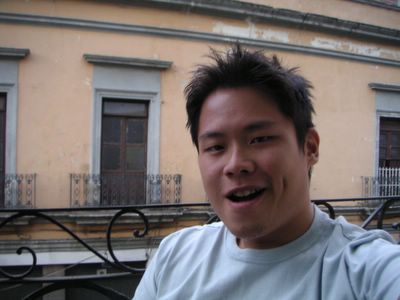

0 Comments:
Post a Comment
<< Home